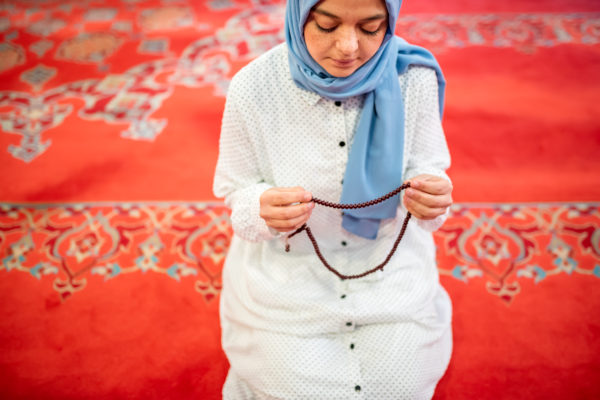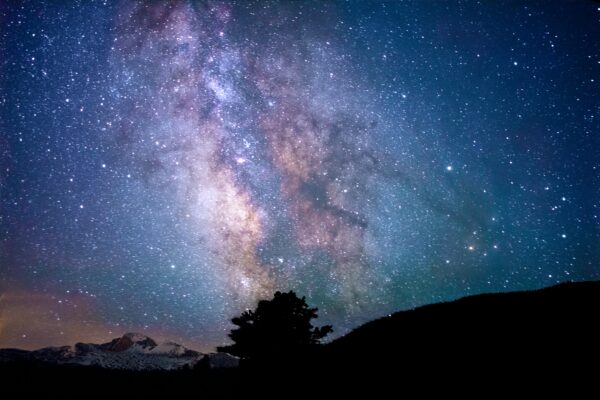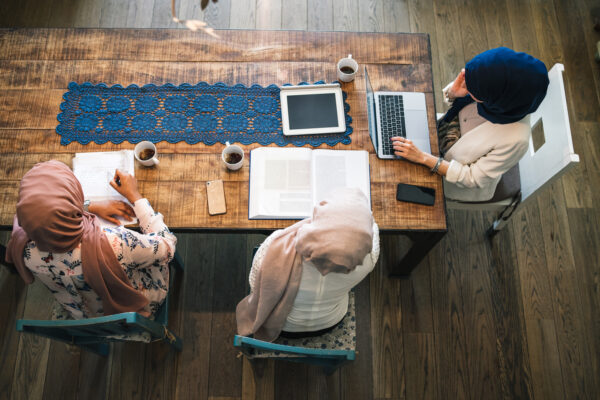This is the story of how a group of Muslims in Birmingham, from different experiences and backgrounds, came together to discuss how they could enable the harmonisation and unification of the Muslim community on the time of fajr. Months of hard work and research gave birth to their project Open Fajr.
Seven years ago in the month of Ramadhan, our interest in the time of fajr was ignited. After hearing a lecture on how to determine the time of fajr, we spoke with a friend experienced in observing fajr, and the journey began from there!
Over that month of Ramadhan, interest amongst friends increased, and in groups we drove beyond the eastern border of the city to observe the horizon. There were some beautiful locations, overlooking fields and expanses, and we read our fajr prayer together in the twilight!
As we became more confident and experienced in determining the time of fajr by observation, we started to compare our findings with timetables produced by different mosques in Birmingham. We were really disappointed, that at the same time within Birmingham in the month of Ramadhan, there were Muslims who were eating their pre-dawn meal; at the same time there were Muslims who were reading their fajr prayer; and at the same time there were Muslims who had finished their prayers, and were back in bed. We know excellent work had been done in 1991 to bring mosques and organisations together on a unified timetable, but over time differences emerged.
We continued to make observations in groups at different sites on the border of the city, and beyond it. We also reviewed the literature and research on the topic.
Some communities use different calculation methods to approximate the time of fajr. Some use a fixed time period before sunrise; others use a fixed solar depression angle (where the sun is a certain angle beneath the horizon, as it is rising); some divide the night or day into 7 portions, and subtract one of these portions from sunrise. But none of these calculation methods have been proven to accurately determine the time of fajr, in all places on Earth, throughout all seasons.
If an individual were to determine the time of fajr by observation, it may be difficult for a community to alter their timetable based on that individual observation. Different people see slightly different things due to “observer bias”. Also, an individual’s observation is difficult to critique, as other people weren’t there to see the same thing.
So we started to think of a solution that would provide accurate data, but also in a way that would unify communities.
As interest in the topic was increasing, our team expanded too. Between us, we had expertise in physics, IT, photography, materials engineering, research methods, and observations.
When my colleague suggested that we take photographs of the sky, I have to be honest and say my eyebrows raised. But in that moment, I hadn’t considered the wonderful vision: to provide data that is open, transparent, verifiable and open to critique – and for the whole city to join in making observations by viewing the photographs!
And the idea grew. We researched specialist cameras, discussed their suitability with their manufactures, and sought specialist opinions. We decided to move forward with this method, we tested the idea, and it worked!
On the images, which are taken 1 minute apart, you can view them back and forth, and see the point when the first horizontal light spreads on the eastern horizon. As all photographs were published on the website (www.openfajr.org) for the public to view them, individuals became more aware of how to determine the time of fajr by observation.
In the month of Ramadhan 1436 AH (2015), we started to engage with mosques and organisations. Interest began to grow more and more.
After a calendar year of the camera being permanently mounted, with daily photographs throughout the seasons published on the website, we established a consensus panel to view the images, so they could vote on the image which they thought most accurately represented the time of fajr. We wrote to every mosque and Islamic organisation in the city to invite them to take part. We also wrote to experts, academics, religious scholars, and umbrella organisations.
A professional statistician analysed the consensus panel’s opinions on the times of fajr, to produce an annual timetable.
Prior to making the research public at the beginning of May 2016, we submitted the research for expert review, and have since received authoritative endorsements, which are available to view on the website.
We posted the full research paper to all mosques and Islamic organisations in the city. We are indebted to Birmingham Central Mosque, who were immediately receptive: they were keen to organise a conference, inviting delegates from all backgrounds and schools of thought, to discuss the research.
We were invited to present the research to scholars and leaders of our community on 7th May. We were honoured to be in their presence, and discuss the research. It was an inspirational experience: our leaders came together to discuss an important issue, and through dialogue and discussion, agreed to adopt the proposed timetable from the month of Ramadhan. It was estimated that the mosques that agreed to adopt the timetable represented about 70% of the Muslim population of the city; about 150,000 individuals.
The importance of the diligence and timing of our prayers cannot be underestimated. And beyond that too is the goal of all Muslims unifying on this issue.
Through dialogue, progressive and open hearts, Muslims can come together, unified, in harmony, with strong community cohesion.
Our aspirations for our Ummah, is that our community speaks with one voice; we look within and identify strengths and build upon them together; and see opportunities for improvement and work on them together.
Now, as we close our eyes, we can imagine a goal being actualised: it is dark, the city is quiet, and the air is crisp. At the same time, throughout the city, the call to the fajr prayer resonates and reverberates throughout mosques, houses and hearts. The collective energy and strength of the Muslim Ummah will enable us to strive.
With peace and prayers,
The OpenFajr research team
To find out more or to contact the team, please visit www.openfajr.org





